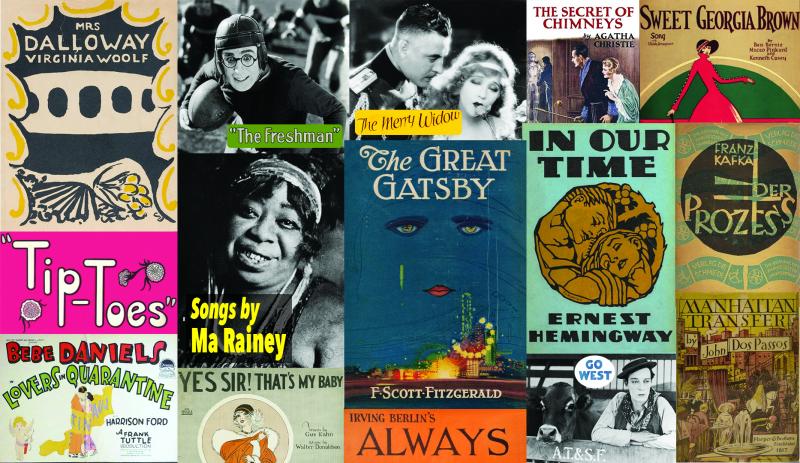
Literary aficionados and copyright buffs alike have something to celebrate as we welcome 2021: A new batch of works published in 1925 is entering the public domain on January 1. In copyright, the public domain is the commons of material that is not protected by copyright. When a work enters the public domain, anyone may do anything they want with the work, including activities that were formerly the “exclusive right” of the copyright holder like copying, sharing, and adapting the work.
If you agree with BBC Culture’s assessment that the year 1925 was a “golden moment in literary history,” and maybe even “literature’s greatest year,” there is reason to be excited about the latest collection of books to enter the public domain in the United States. Some of the more recognizable titles include:
- F. Scott Fitzgerald’s The Great Gatsby (published in 1925, renewed in 1953)
- Virginia Woolf’s Mrs. Dalloway (published in 1925, renewed in 1953)
- Sinclair Lewis’s Arrowsmith (published in 1925, renewed in 1952)
- Ernest Hemingway’s In Our Time (published in 1925, renewed in 1953)
- John Dos Passos’s Manhattan Transfer (published in 1925, renewed in 1953)
- Theodore Dreiser’s An American Tragedy (published in 1925, renewed in 1953)
Copyright owners of works first published in the United States in 1925 needed to renew the work’s copyright in order to extend the original 28-year copyright term. Initially, the renewal term also lasted for 28 years, but over time the renewal term was extended to give the copyright holder an additional 67 years, for a total term of 95 years. This means that works that were first published in the United States in 1925—provided they were published with a copyright notice, were properly registered, and had their copyright renewed—are protected through the end of 2020.
Once in the public domain, works can be made freely available. Organizations that have digitized text of these books, like Internet Archive, Google Books, and HathiTrust, can now open up unrestricted access to the full text of these works. HathiTrust alone will open up full access to more than 35,000 titles originally published in 1925. This increased access provides richer historical context for scholarly research and opportunities for students to supplement and deepen their understanding of assigned texts. And authors who care about the long-term availability of their works may also have reason to look forward to their works eventually entering the public domain: A 2013 study found that in most cases, public domain works are actually more available to readers than all but the most recently published works.
What’s more, public domain works can be adapted into new works of authorship, or “derivative works,” including by adapting printed books into audio books or by adapting classic books into interactive forms like video games. And the public domain provides opportunities to freely translate works to help fill the gap in works available to readers in their native language.
So what new creativity might we have to look forward to with the current collection of 1925 works entering the public domain? Blake Hazard, F. Scott Fitzgerald’s great-granddaughter and a trustee of his literary estate offers one possibility. Hazard told the Associated Press that, as The Great Gatsby’s 95 years of copyright protection was coming to a close, “We’re now looking to a new period and trying to view it with enthusiasm, knowing some exciting things may come. […] I would love to see an inclusive adaptation of Gatsby with a diverse cast. Though the story is set in a very specific time and place, it seems to me that a retelling of this great American story could and should reflect a more diverse America.”
Discover more from Authors Alliance
Subscribe to get the latest posts sent to your email.
